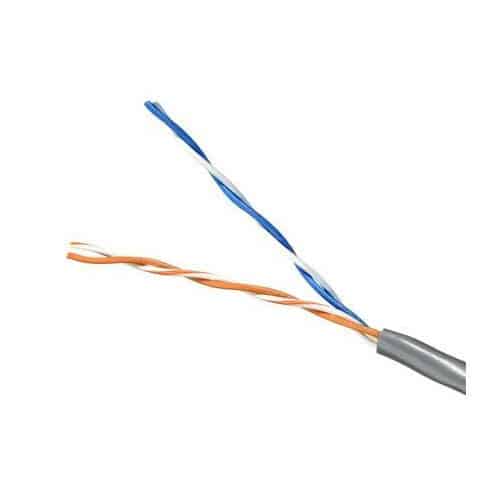Category 2 cabling, or Cat2 cable, is the second-lowest grade of unshielded twisted-pair (UTP) cabling. Category 2 cabling was designed to support digital voice and data communication.
What was Cat2 Cable?
Category 2 cabling, commonly known as Cat2, holds historical significance as one of the earliest forms of unshielded twisted-pair (UTP) cabling. Designed primarily to support digital voice and low-speed data communication, this article delves into its historical context, common uses, technical specifications, and reasons for its discontinuation.

When Was It Introduced?
Category 2 cabling was introduced in the late 1980s as part of the EIA/TIA-568 standard. It served as a foundational technology during the early years of digital voice and data communication, bridging the gap between the analog world and emerging digital technologies.
Official TIA/EIA-568 standards have only been established for cables of Category 3 ratings or above. Though not an official category standard established by TIA/EIA, Category 2 has become the common name given to Level 2 cables originally defined by Anixter International, the distributor.
Technical Characteristics of Cat2 Cable
Category 2 cabling was capable of data transmissions up to 4 Mbps. It was used primarily in the installation of premise wiring for legacy Token Ring networks from IBM.
The electrical characteristics of category 2 cabling make it unsuitable for most networking purposes today, thus it is no longer installed as premise wiring.
- Bandwidth: Supports bandwidth up to 1 MHz.
- Data Rate: Maximum data rates were usually capped at 4 Mbps.
- Cable Length: Typically limited to runs of 100 meters or less.
- Pair Count: Usually 4 pairs, but could go up to 25 pairs for certain applications.
Common Use Cases (At The Time)
In its heyday, Cat2 cable was commonly employed for:
- Telephone Systems: Most notably used in PBX systems for internal voice routing.
- Token Ring Networks: Frequently used in early IBM token ring networks.
- Low-speed Data Transmissions: Used for serial connections and text-based terminals.
Why Was It Discontinued?
- Limited Bandwidth: Cat2’s 1 MHz bandwidth was quickly outpaced by the increasing demands of modern networks.
- Rapid Technological Advances: Newer categories of cables provided much higher data rates and better noise resistance.
- Switch to Digital: As networks shifted towards fully digital architectures, the need for low-bandwidth, analog-friendly cabling systems waned.
Conclusion
While Cat2 is an outdated technology, its role in the formative years of digital communication should not be discounted. Understanding its limitations and capabilities provides valuable insights into the rapid evolution of networking technologies.
References
- “Data, Voice, and Video Cabling“, Jim Hayes and Paul Rosenberg, 3rd Edition.
- EIA/TIA-568 Standard Documents.
- RFC 1180, “A TCP/IP Tutorial”.